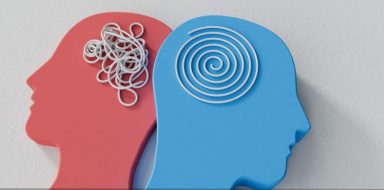What to Know About Juvenile Arthritis
Arthritis is not a word typically associated with children, but arthritis occurs in many forms and can happen at any age. For example, chronic childhood arthritis can affect all children at any age. The most common form of childhood arthritis is juvenile idiopathic arthritis (JIA), also known as chronic childhood arthritis.
What is Chronic Childhood Arthritis?
Arthritis — the pain, stiffness and swelling of joints — is found more often in older adults. However, according to the American College of Rheumatology, one child in every thousand will experience some form of chronic arthritis. Approximately 300,000 children in the U.S. live with chronic childhood arthritis.
The American College of Rheumatology recognizes juvenile idiopathic arthritis as the most common form of childhood arthritis, which displays the following characteristics:
- Inflammation of one or more joints before the age of 16.
- Joint symptoms such as stiffness, swelling, or pain lasting more than 16 weeks.
In addition to pain and stiffness in the joints, chronic childhood arthritis can also impact growth, damaged joints, and cause eye inflammation.
What Are the Symptoms of Chronic Childhood Arthritis?
The signs of chronic childhood arthritis are similar to those of adult arthritis, and most young people outgrow the disease. In some children, however, chronic arthritis can affect bone and joint development, having lifelong impacts.
Symptoms of chronic childhood arthritis typically depend on what type of arthritis a child may have, and the symptoms may come and go. The following are the most common symptoms of chronic childhood arthritis.
1. Swelling
Joint swelling is more common in larger joints, like the knees and elbows. The swelling remains in the joints for long periods, can feel warm to the touch and appear red.
2. Pain
Joint pain may not be noticeable at first, but a child might seem hesitant to play or may guard themselves. Some children may limp, particularly upon waking in the morning or sitting for long periods. Pain is typically more prominent in the morning and decreases as the day progresses.
3. Stiffness
Children may not complain about stiffness, but parents may notice clumsiness or a lack of coordination. For example, parents may see a change in the way a child runs or throws a ball.
4. Immune-Related Symptoms
Swollen lymph nodes fever, and rashes may develop throughout the body. These symptoms may become more prominent during the evenings, illness, or times of stress.
5. Individualized Symptoms
Chronic childhood arthritis affects every child uniquely. Arthritis symptoms may show periods of remission, then suddenly appear. Symptoms may disappear completely after two years or can last indefinitely. In rare cases, chronic childhood arthritis may affect internal organs, resulting in complications. Growth may slow, and joints may grow uneven, making one limb noticeably longer than the other.
Giardia in kids can cause gas and nausea. Here you'll learn how to prevent this illness and when it's necessary to talk to your doctor.
Causes and Risk Factors
The exact cause is unknown, but the most common type of childhood arthritis is an autoimmune disorder. In autoimmune diseases, the body’s immune system loses the ability to differentiate between cells and foreign ones. The immune system targets the body’s cells, causing swelling and pain.
Managing childhood arthritis requires an accurate diagnosis, and this involves ruling out other conditions with similar symptoms. Although there’s no definitive test that can diagnose arthritis in children, a combination of indicators can provide a diagnosis.
Blood tests can check for inflammation or autoimmunity. Rheumatoid factor, an antibody, is found in the blood when the body experiences a rheumatoid condition. In addition, x-rays, bone scans and a sample of joint fluid are some examples of diagnostic tests a physician might order. Some children with arthritis develop eye problems, known as iridocyclitis, which may be diagnosed utilizing a slit lamp.
All these tests are used to determine if a child arthritis and which form of arthritis they may have.
Treatment for Chronic Childhood Arthritis
There’s no cure for chronic childhood arthritis, but children eventually outgrow the condition. Fortunately, children can still live a full life with arthritis, as long as it is well-managed. With early and adequate treatment, 505 to 70% of children can see long periods with no symptoms.
Treatments for arthritis in children may include the following:
- Medications to treat pain, reduce inflammation, decrease the body’s immune response and prevent joint damage.
- Physical therapy to improve range of motion and reduce stiffness.
- Exercise to build strength, boost endurance and help with physical development.
Arthritis Mental Health
The pain and limitations of arthritis can affect a child’s confidence and social development. Therefore, treatments should focus on not only a child’s health but also a child’s overall quality of life. According to the Arthritis Foundation, approximately 15% of children with arthritis have clinical depression. What’s equally concerning is about 20% more children with arthritis show signs of subclinical emotional problems. Therefore, children with chronic childhood arthritis may benefit from visits with a mental health counselor, along with other treatments.
Living With Arthritis
During difficult periods, families and affected children may benefit from support groups or family counseling. Keeping routine visits with doctors and therapists can prevent flare-ups and help identify any complications. It’s also important to remember that — with support and a lot of love — having a full and satisfying childhood with chronic childhood arthritis is possible.







